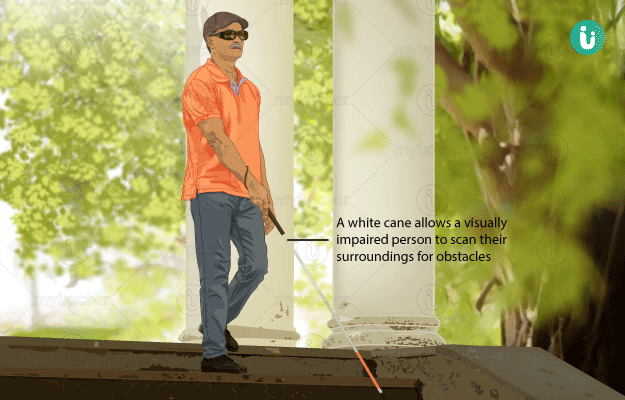Blindness is evaluated by an ophthalmologist (eye specialist). The doctor takes a detailed history that includes asking about symptoms related to vision. They include onset, duration of symptoms, progression of symptoms, whether they are aggravated at night, whether specific colours are not seen clearly, and whether the symptoms are through one eye or both. Associated medical conditions such as endocrine disorders (diabetes, thyroid disorders), hypertension, etc., if present, are also noted.
After a general physical examination, a detailed ocular examination is done. This involves observing each eye under an instrument called an ophthalmoscope. The examination helps identify external structural abnormalities (for example, the opacity of the eye lens, aka cataract). The internal structures of the eye are also visualised by increasing the size of the pupil. This is done by administering medicated drops that temporarily paralyse the pupil and increase its size so that the doctor can see the inside contents of the eyeball for vascular abnormalities. This procedure is known as indirect ophthalmoscopy.
Certain investigations are also done to help narrow the diagnosis. These include:
- Blood tests: routine complete blood counts (CBC), thyroid hormone levels, inflammatory markers or C-reactive protein (CRP), Erythrocyte sedimentation rate (ESR), and blood sugar levels
- Eye tests: several eye tests are conducted to determine the cause and degree of blindness. Some of the tests are
- Snellen’s eye test: this test is used to determine the degree of vision loss
- Slit-lamp examination: this identifies any structural aberrations of the eye
- Intraocular pressure measurement: it measures the pressure of the liquid in the eyeball. Excessive pressure (as in the case of glaucoma) can result in blindness
After the history, examination and investigations, the doctor can reach a definitive diagnosis of the cause of blindness.
In children, the child doctor (paediatrician) would first diagnose any visual problems. During regular health check-ups, the doctor would notice and assess the child’s ability to focus and follow light or colourful objects. Usually, this is achieved by two to three months of age. However, if the child is still not able to focus or respond to light then the child is referred to an ophthalmologist for further evaluation.

 Doctors for Blindness
Doctors for Blindness  OTC Medicines for Blindness
OTC Medicines for Blindness



















